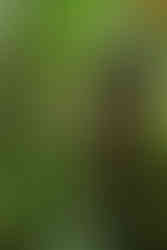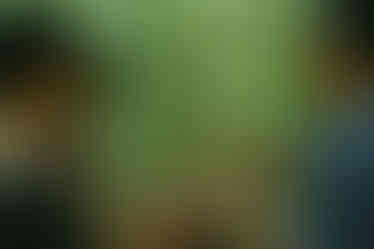The Mouse Hunt | Insights on indigenous stewardship
- George Brill
- Nov 7, 2019
- 8 min read
Updated: Sep 21, 2022
I glance up at the rear-view mirror and my eyes lock with the unwavering gaze of Empeng; dark eyes amidst a face of deeply-carven wrinkles. Her brightly coloured t-shirt is emblazoned with the words ‘cocaine and caviar’ in large letters—an amusing juxtaposition to her age and demeanour. Of course she has no idea, nor even if she did would it make any sense to her. Who knows where it came from.
Beside her, her sister Chengkling crouches, low and diminutive: the two of them are easily pushing eighty. Surrounding the pair is a haphazard arrangement of six younger women, bundled on top of one another in the back of the truck. Flowers flow from their tightly curled hair, held in place by the long teeth of ornately-carved bamboo combs; white and yellow petals contrast sharply with dark olive skin and the deep black of their curls. Eight faces stare ahead emotionless. They crouch as if arranged for a portrait shoot, unperturbed by the rough jostling as we bounce and grind our way along the pitted track. These women are Batek: descendants of an ancient tribal heritage; rainforest foragers from deep in the heart of Peninsular Malaysia.
None of them sit in the truck itself. I’m alone. I ponder how on earth I ended up in this bizarre situation.
This is part of a larger series of articles on the Batek expedition
Back to the Trees | Of human tree-climbing, forgotten potential, and skewed evolutionary perspective
TALES FROM THE JUNGLE
OTHER BATEK ARTICLES

Empeng prepares her next tobacco-in-a-leaf roll-up creation
I had met the tribe a few months earlier, working for a small wildlife conservation group who taught occasional English lessons to the younger children. Over the course of a couple of months I’d grown to know them, and their shyness had given way to an amicable easiness. In the months that followed, I would come to live in the village, to learn the language and integrate into their culture and society. Their tolerance would become an unconditional acceptance that begot in me a deep sense of belonging. But that’s getting ahead. Right now I was still a tolerated outsider, glimpsing my first of many remarkable phenomena of a forgotten culture.

On track to the jungle
Leaving the truck by the side of the track, we headed barefoot into the forest. A railway line cut a stark juxtaposition, as the women crossed from green wall to green wall, single-file, machetes at their belts. Solid ground gave way to thick sucking mud, and the line split, now flowing as individuals around tangled roots and vines like ants through grass, or the swift flow of water around rocks. The reason for our visit was to collect pandanus, a tough, viciously barbed leaf which would later be dried and woven into bags and mats. The women worked at incredible speed, cutting them down as they went, deftly stripping away the spines with the backs of their machetes. Each flowed around the another as if with a common mind, working silently with a clinical precision and practised efficiency.
We walked some distance, and by the time we paused each had cut vines to bind the growing bundles they carried. A small fire was brought to life and the women milled about, taking their ease. Some produced oversized leaf roll-ups from their sarongs and began to smoke, lighting their creations with glowing brands from the fire. Chengkling began to dry her pandanus in the flames, while the remainder busied themselves with further adornments to their hair. It was hot. Humidity was high and the sun fell in thick, steaming rays from a canopy above. The mud that encased our feet began to dry and crack; leech bites glistened crimson in the dappled light.
I sat alongside Empeng as she smoked, and watched them as they rested. A resilience and strength seemed to radiate from them, far beyond the parameters of our Western society. It is visibly embodied in powerful physiques and flowing movement of the younger women, yet no less clear in the crouched and wizened forms of the elder two: an underlying structure of anatomical integrity, anchoring an outer canvas marked and worn with tales of age and experience. I see it most in their faces. Deep wrinkles of the elders contrast with the strong jaw-structure and graceful beauty of the younger; their skin a dark olive, smooth and soft, yet solid, as if shaped from velvet-lined stone. Yet amidst the faces of both young and old are set bright, dark eyes with a fire and intensity unlike any I’ve seen before. In that moment I saw more than just a group of capable women. They represent a far-reaching corner of human potential: a subtle strength and proud independence of a dying people—the last of the forest spirits.
On the hunt for pandanus
My thoughts were interrupted. One of the women fanned the ground with a bundle of folded leaves. She had lit a small fire in the entrance of a mouse hole, and was fanning smoke down the burrow. A rhythmic thwack, thwack, thwack beat against the hiss of insects as she pumped air into the hole. Smoke began to rise from the ground before her like dry ice, clinging low and snaking about the roots and stems. Before long, a wispy line marked the burrow’s subterranean path, growing in thickness by the second.
Halfway down the line, another of women dug with her machete, finding the burrow and reaching inside. Her hand returning empty, she filled her new hole with dry leaves, lit them and the fanning began again, pushing the line of creeping smoke further onwards. And so the process moved along, meandering around trees and root systems for thirty feet or more.

Smoke begins to rise from the ground as Doi fans the fire at the burrow's open end
Suddenly one of the women, backside in the air with her hand armpit deep inside the burrow, pulled out the limp body of a young mouse. Less than the length of her palm, its tail hung limply through her fingers. She cradling it gently, massaging its belly and inspecting the lifeless form. Elsewhere another had dug out the mother, a monstrous foot-long jungle rat. Treatment was vicious in comparison. It was pulled from the hole, both back legs snapped like toothpicks to prevent escape, and the unfortunate animal raised and swung above her head like a rag doll. Speed and enthusiasm of the movement far exceeded the aged frame of the old women doing the swinging, and the animal’s skull met the target tree with a sickening crunch, and fatal consequences. Dinner secured.
By now, six or more baby mice had been recovered, lying limp and unresponsive in their state of asphyxiation. To this day, what happened next is the most unexpected and remarkable occurrence I’ve ever witnessed. One by one, with a surety of past experience, the women raised mice to mouths and sucked on tiny muzzles. Cheeks pulled in with the strength of indrawn breath, and they repeated the process, spitting occasionally, sucking smoke from tiny lungs. To my even greater surprise, the unconscious mice began to stir, stumbling drearily about as the women resuscitated them, massaging the soft white fur of throat and belly with the gentle caress of a fingertip. When one failed to regain consciousness it was fed water from a bottle-top, administered in drops with a small leaf.
Mouse resuscitation—something you don't see every day
Once all the mice had been revived, the women sat individually cradling their new pets, gradually bringing them back to full alertness. The extraordinary nature of what I’d just witnessed had thrown me entirely, and I was sat dumbfounded as a sudden shriek broke the silence. Fleeing the lap of its captor, a mouse had escaped, and all chaos broke loose. Five previously reserved and dignified women ran, crawled and scrambled through undergrowth, encircling the escapee with a flurry of childlike giggles and high-pitched shrieks of excitement.
To see such childlike joy and exhilaration in middle-aged and indeed, very old, women, is something I’ve rarely experienced, and certainly not in the Western society I’m used to. I could do little but stand and watch in shock and amusement. But this is the Batek—such joy and playfulness exist regardless of age. Such is their way of life. Also, as I’m quickly reminded, being Batek meant that these women possessed the speed and agility to catch the mice again with bare hands—a feat of no insignificance—, allowing them to return to their seats and examine their catches more thoroughly.
Who knows what the mice thought on waking up...
We continued to sit there on the jungle floor for some time, and I watched them as they cradled and stroked their catches. They lifted the toes and angled the noses to better see the details, absorbed in their unabashed appreciation for the little balls of life they held. Further escape occurred at least another four times, to the point where I began to wonder if perhaps a little more freedom was being allowed than made sense, such was the excitement elicited by the scramble each time. When finally the women grew bored of their inspection, the mice were laid in sarongs and imprisoned in a knotted roll from shoulder to hip, allowing leaf collection to continue unhindered as we made our way back.

Mice tucked safely away, it's back to the village
As we drove home I couldn’t help but look in the mirror again, the unmistakable faces surrounded this time by thorny bundles of pandanus. The expression was unchanged. They stared ahead as if they couldn’t be more bored at the whole situation—unashamed at their disdainful exploitation of my truck: the same societal conveniences that signalled the beginning of an end to their traditional way of life. I dropped them off at the village and helped them remove their bundles from the back of the truck. They went their separate ways to various bamboo shelters, vast bundles of pandanus on their shoulders and mice tucked away in their sarongs. As they left I called to Empeng in my broken Batek, ‘Mice kaneet. Moh seunt-a goon keughtuck?’—‘The little mice. Will you eat them later?’. She turned to face me, the bundles on each shoulder dwarfing her tiny frame. She smiled at me briefly, then continued on her way.
It is true that the Batek are fond of pets, and many an orphaned animal can be found living in the village, sleeping peacefully in a sarong or scurrying around the heads of children; monkeys, hornbills, squirrels—but a few examples of those I’ve seen. But whether these mice were to be either pets, roasted and eaten, or first one and then the other, the interest, care and love shown to them by their captors in the jungle was remarkable.
Such is the way of the hunter-gatherer. It is not a romanticised, selfless caretaking or protection of nature, and much less a refusal or especial frugality in killing and the use of resources. In fact, it seems they’re barely aware of these ideas and are far more concerned with their own needs and wants. Rather it is something deeper—more fundamental and more permanent: an understanding of the ecosystem and their impact within it, and a genuine respect and love for that world of which they are a part. This breeds a lifestyle of harmony, and indeed, sustainability. It ensures that balance is kept naturally, so that no righting of wrongs is required: a prevention far more powerful than any conservation or sustainability cure our society can dream up, however worthy.
It is something that we would do well to consider in our attempts to fix an ever-more broken world.
But a few of samples from the remarkable diversity of Batek pet keeping habits






















Comments